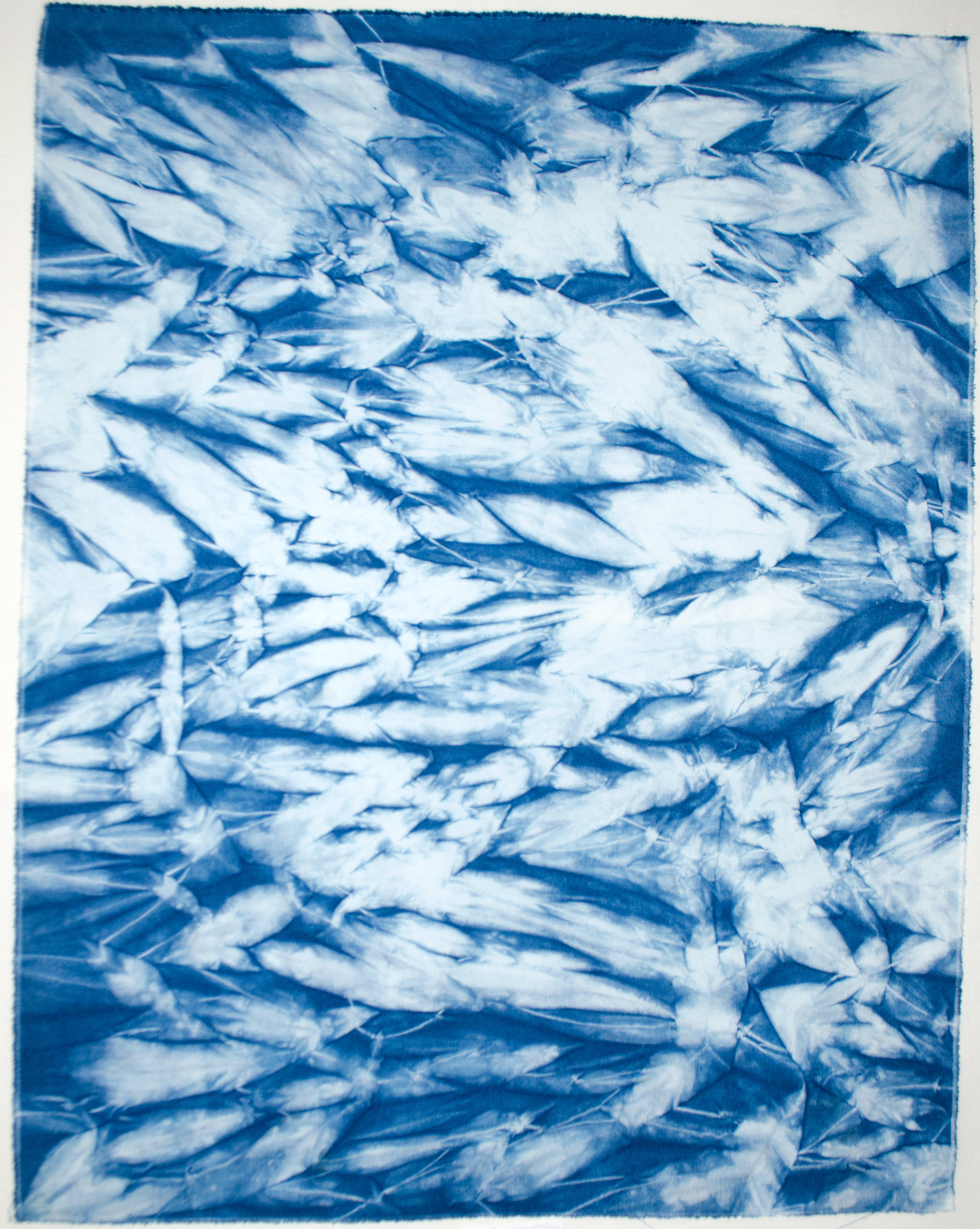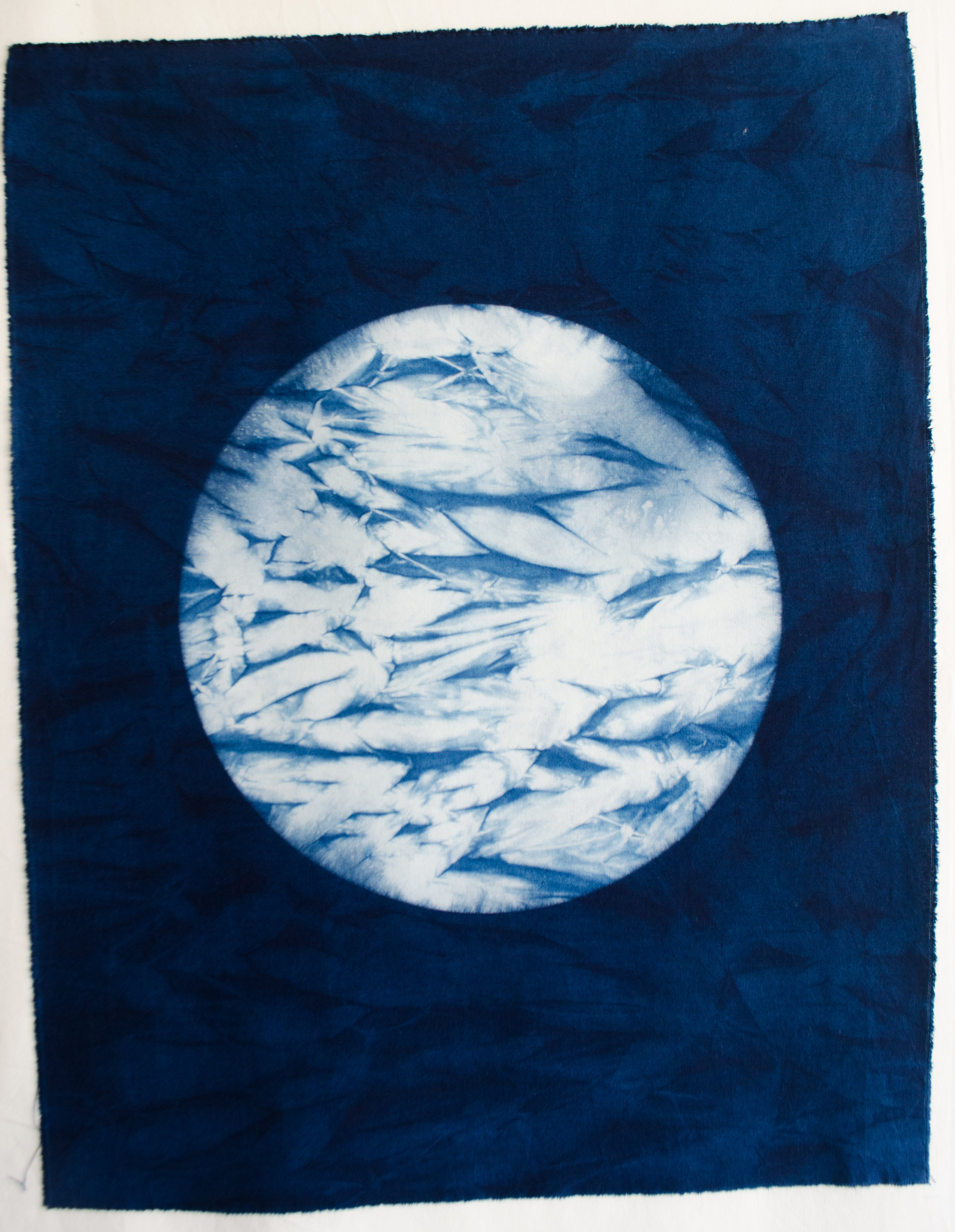This piece of cotton was one of my first attempts at pole wrapping, known in Japanese as Arashi Shibori. I love the process and have amassed quite a collection of poles of different diameters and lengths to accommodate different widths of fabrics. The Japanese, who have made this process into a very precise art form, typically use narrow fabrics that are pieced together to form traditional kimonos. I am not terribly precise, for now at least, and love the random nature and surprise at the moment I pull the fabric off the pole. I've gotten more disciplined with my oxidizing and rinsing, so I'm now able to get much crisper lines and whiter whites than this piece has. I'm using it here to cover a pocket.
Pole wrapped cotton dyed in the indigo bath and handstitched onto a boro style jacket by Carlyn Clark









